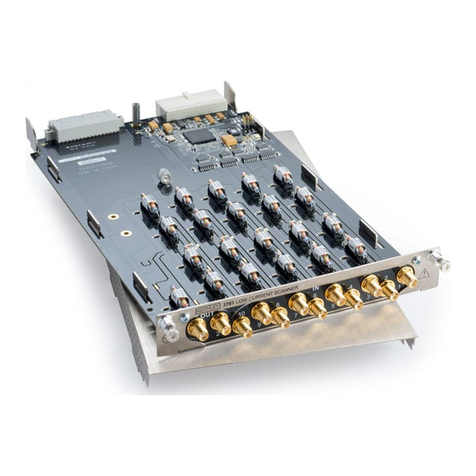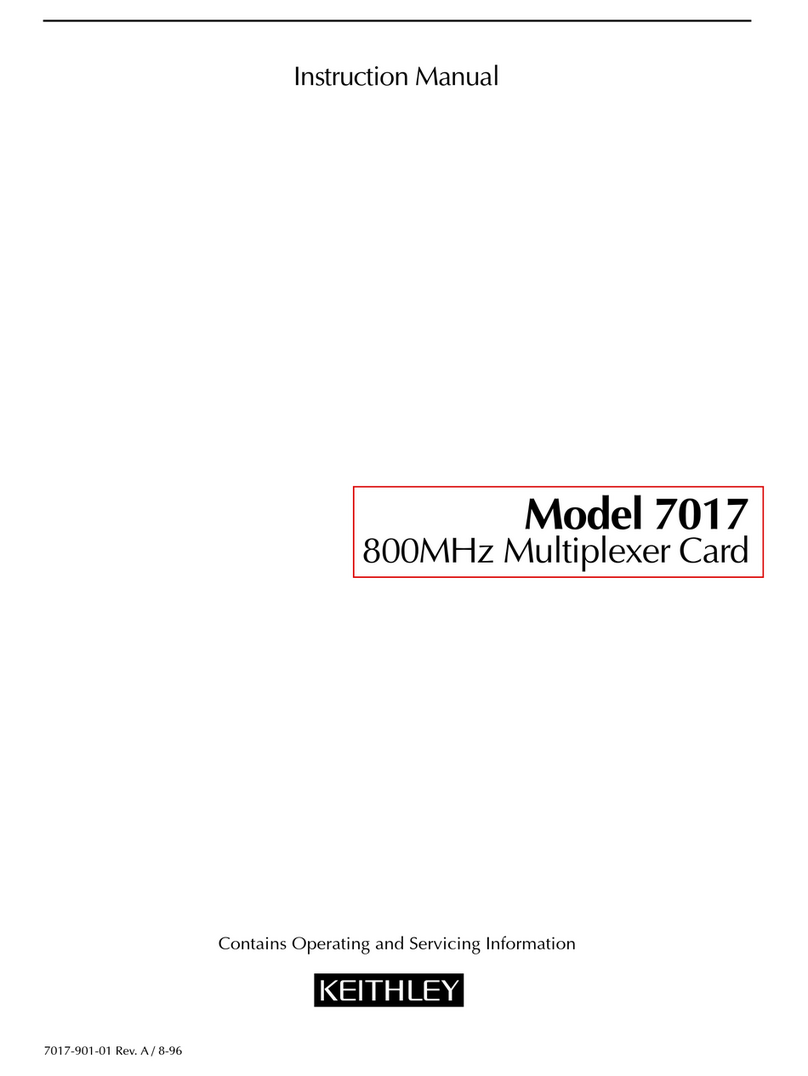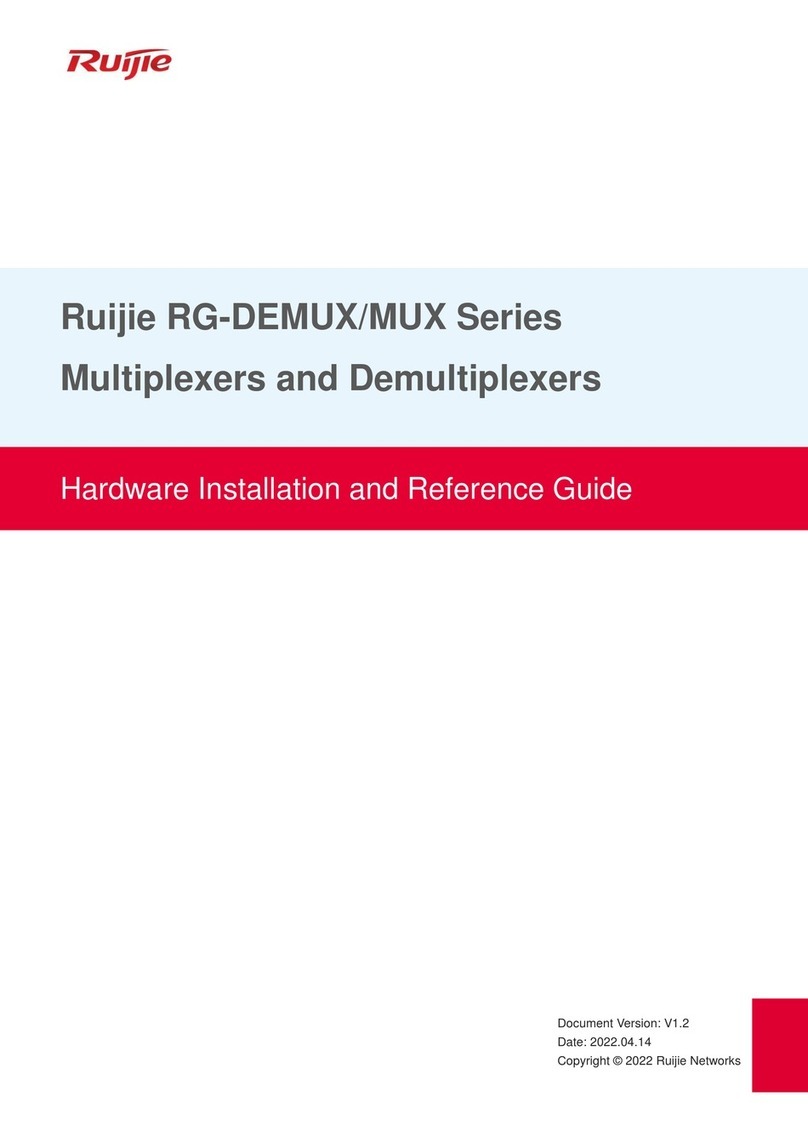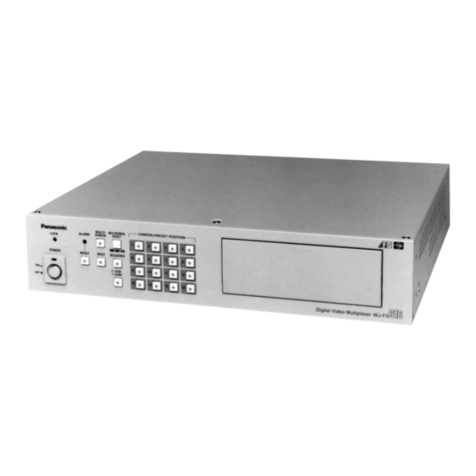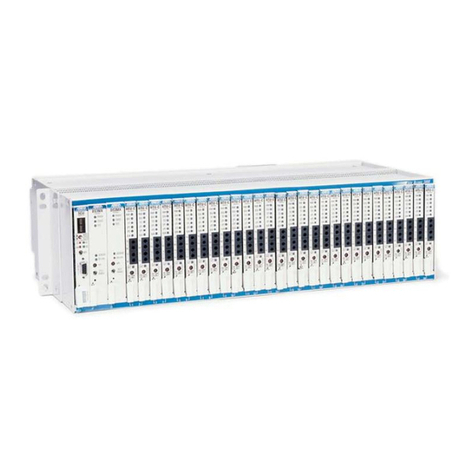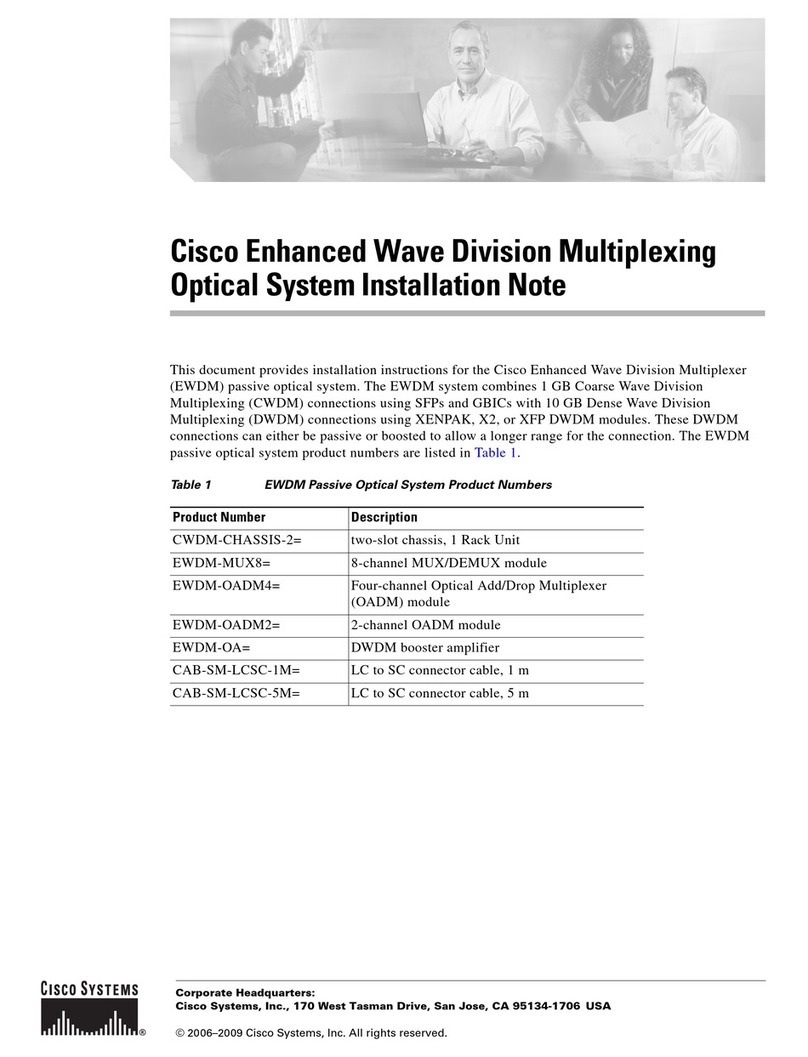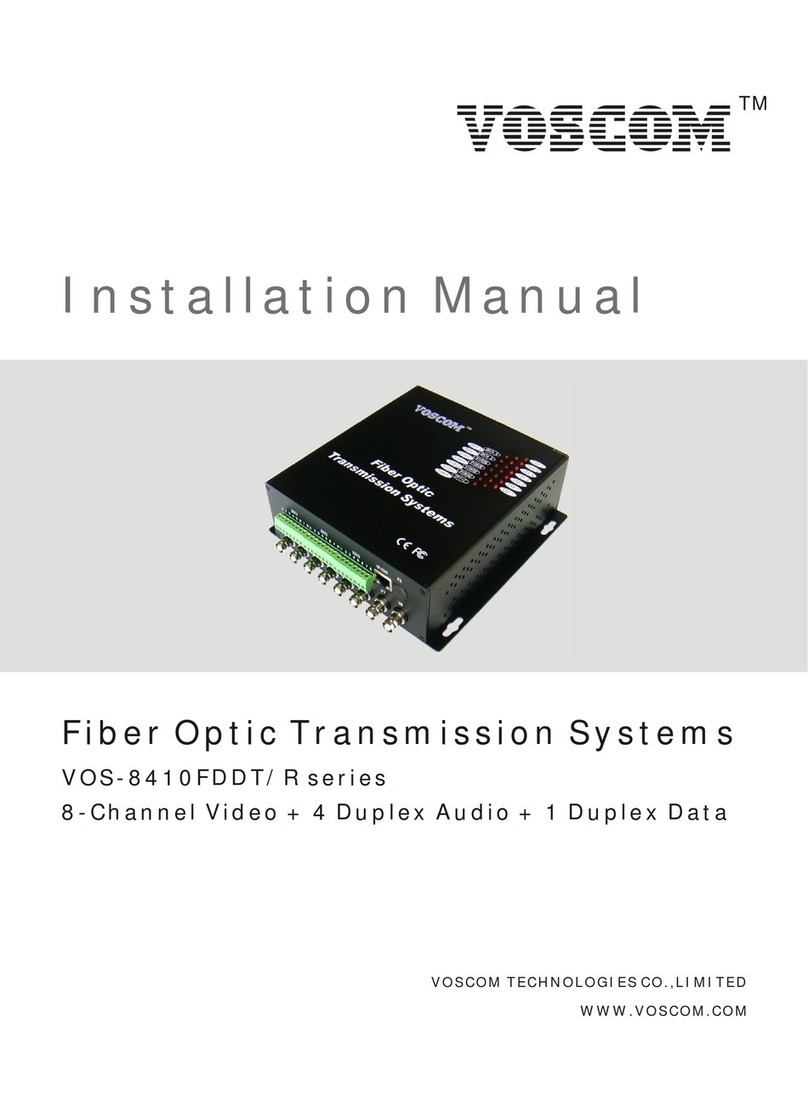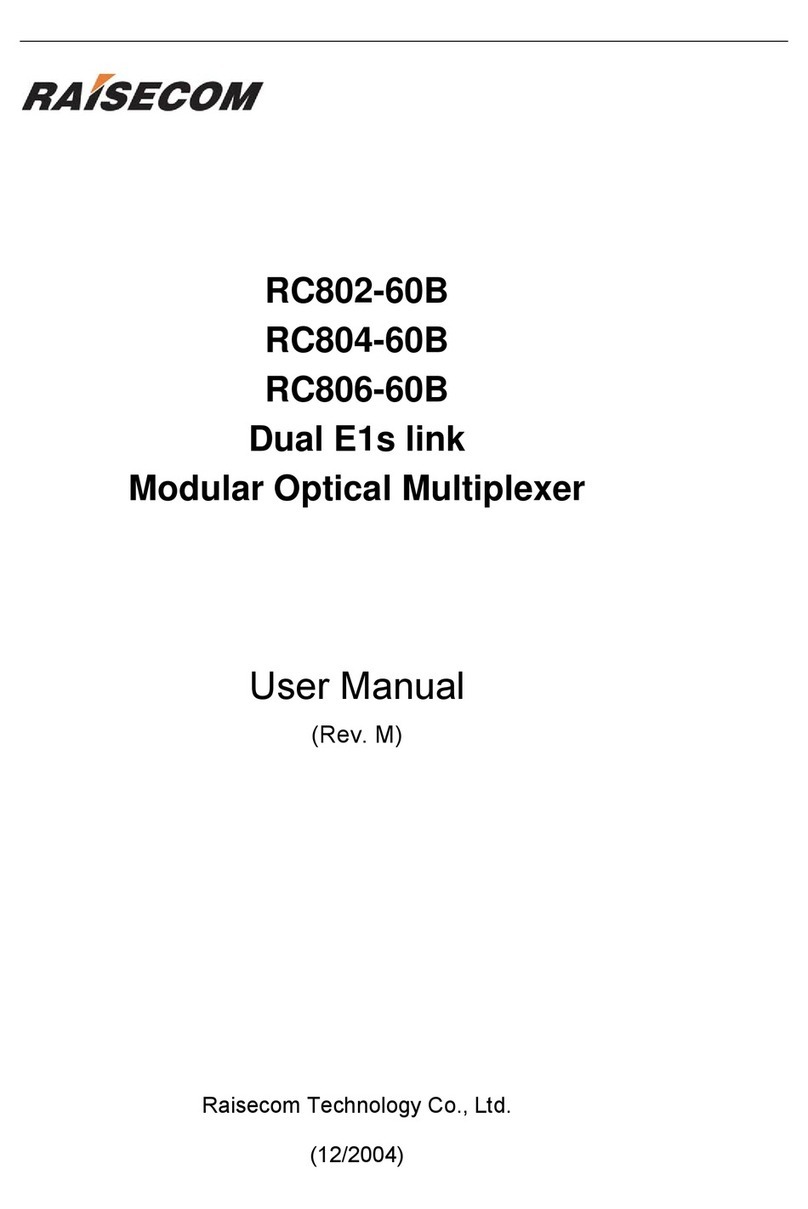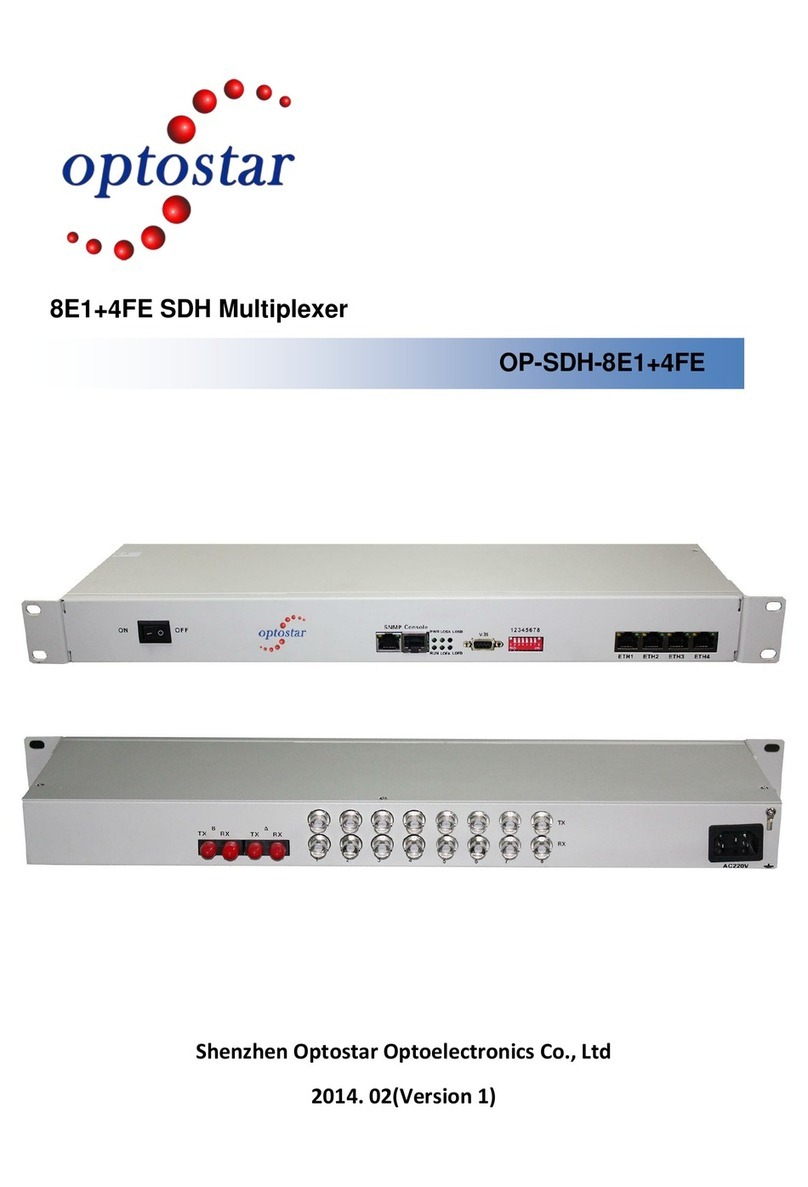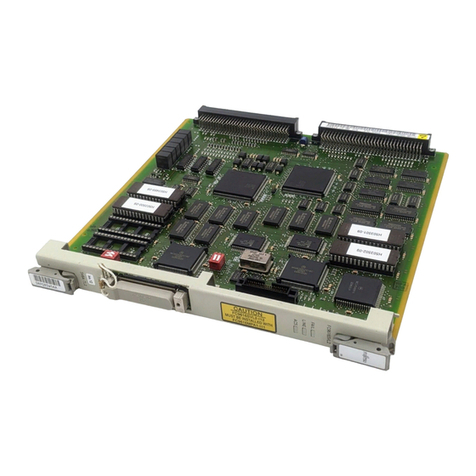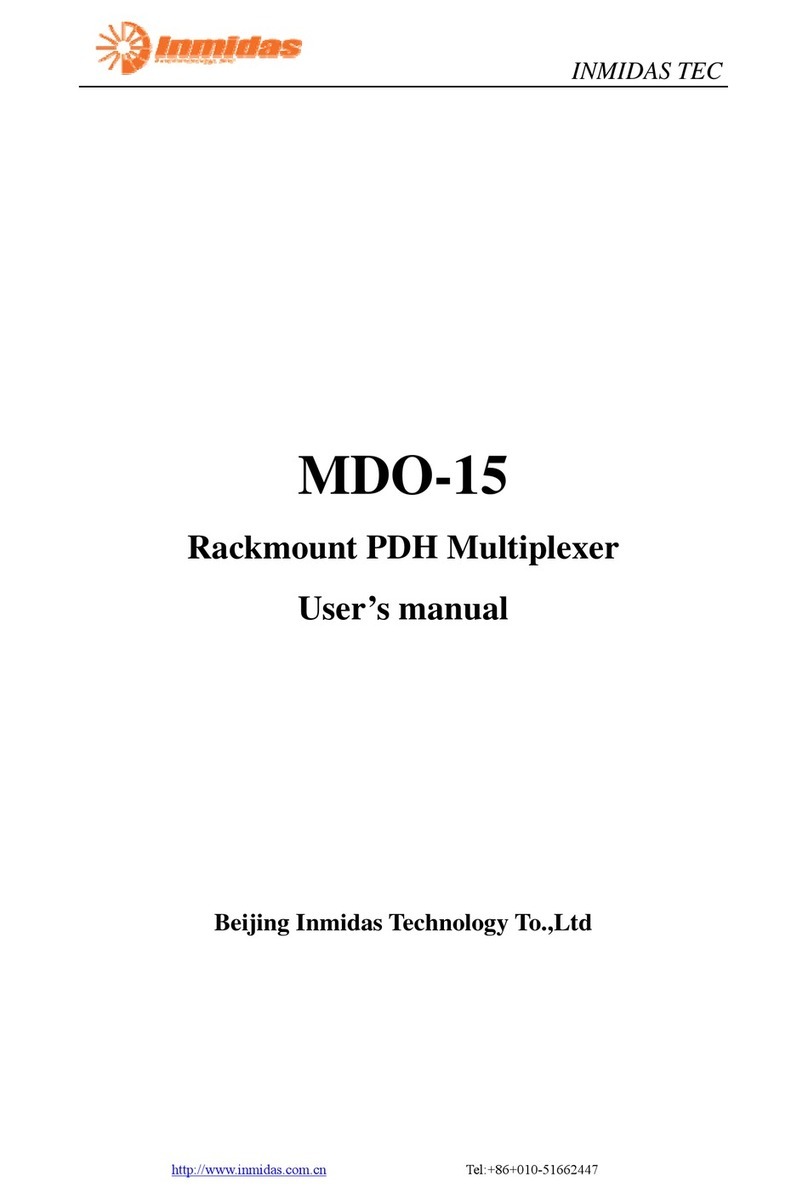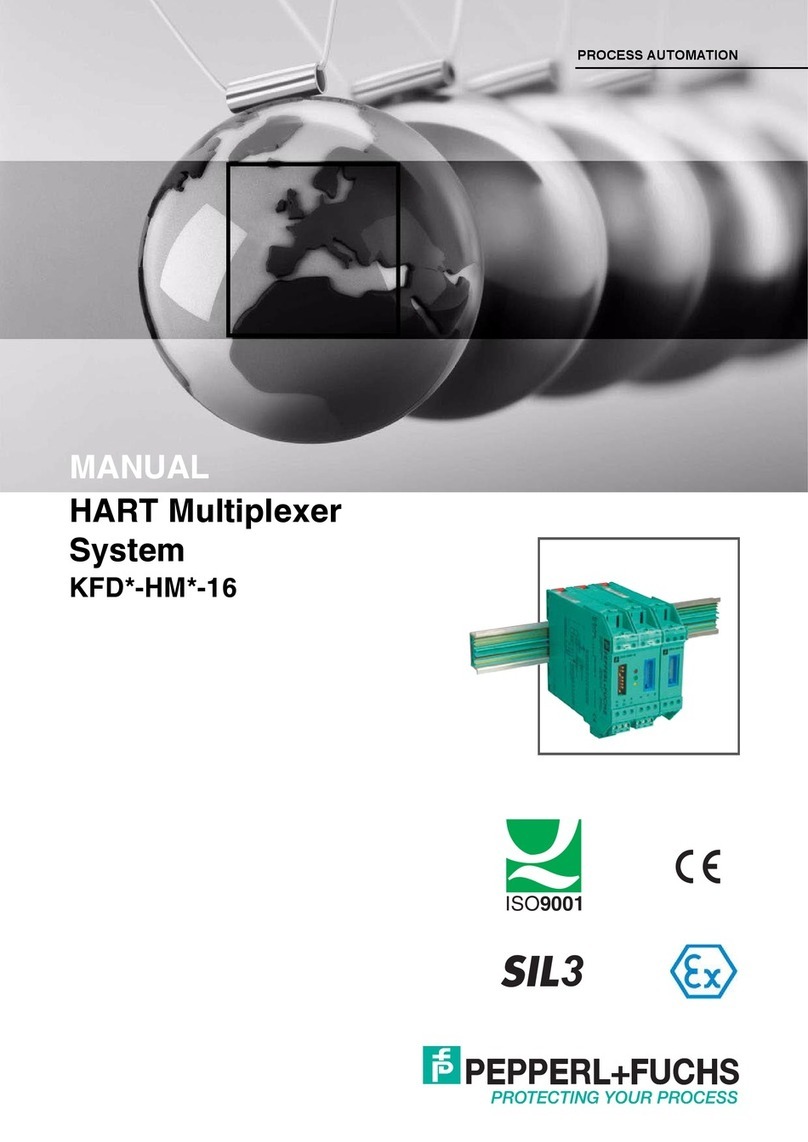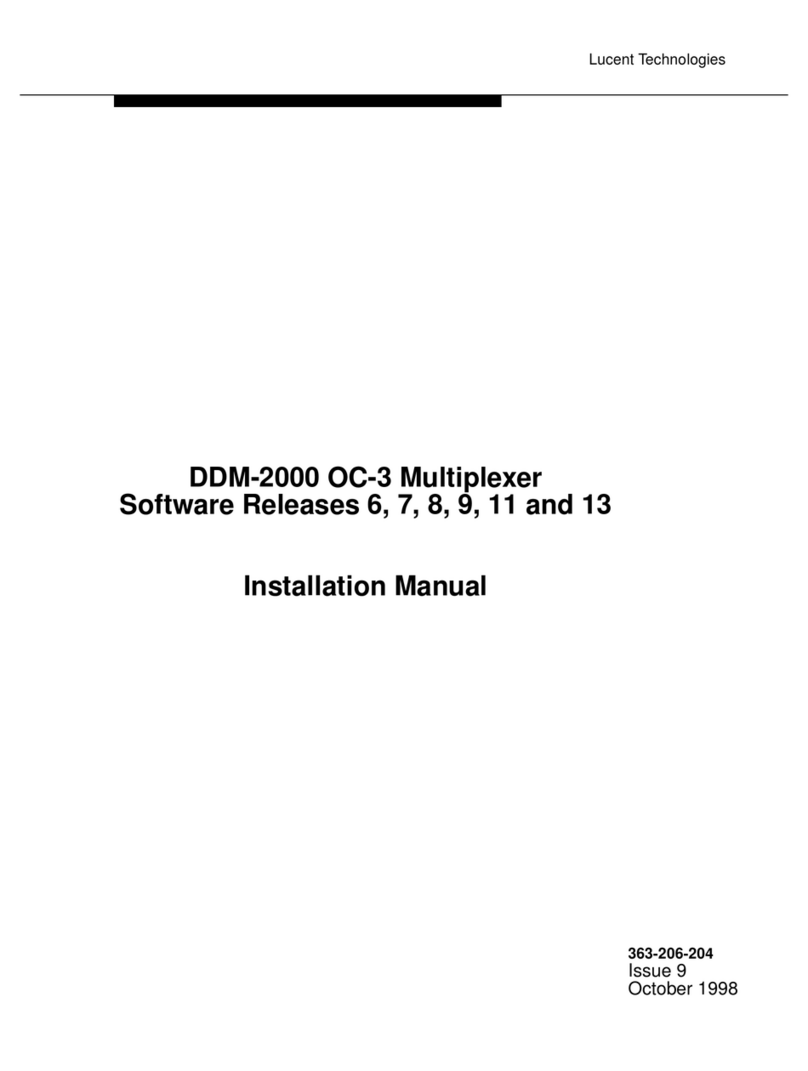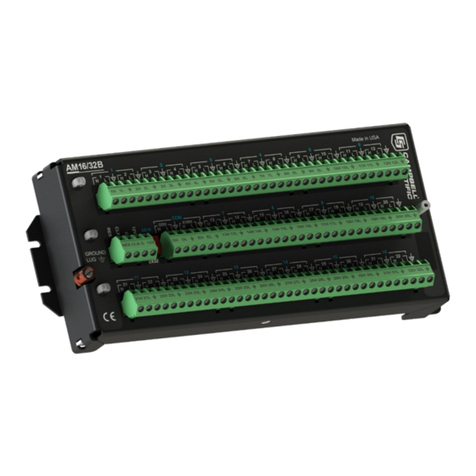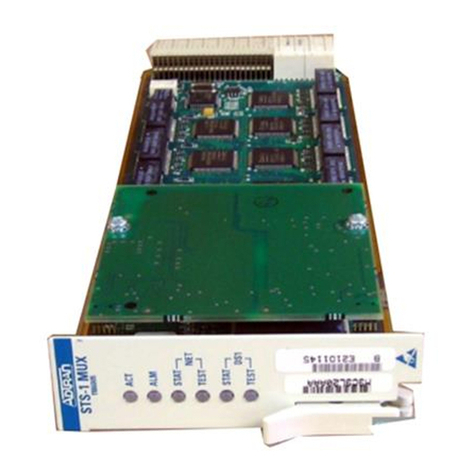Keithley 4225-RPM User manual

Model 4225-RPM and Model 4225-RPM-LR
Remote Pulse Module Instructions
PA-1086 Rev. A October 2020 *PPA-1086A* 1
Keithley Instruments
28775 Aurora Road
Cleveland, Ohio 44139
1-800-833-9200
tek.com/keithley
Overview
The Keithley Instruments Model 4225-RPM and 4225-RPM-LR Remote Preamplifier/Switch Modules are
remote amplifiers and automatic switches.
The 4225-RPM is a multiplexer switch that automatically switches between precision dc source-measure units
(SMUs), C-V, and the ultra-fast pulsed I-V instruments. In addition, the Remot Preamplifier/Module (RPM)
extends the low current measurement capability of the 4225-PMU Ultra-Fast Pulsed I-V Instrument Module.
The Model 4225-RPM-LR is a lower output resistance version of the 4225-RPM. This lower output resistance
allows for a more accurate RPM voltage output at higher currents than the 4225-RPM. Performance tradeoffs
may result, especially when making measurements of high capacitive loads.
Figure 1: 4225-RPM and 4225-RPM-LR

Model 4225-RPM and Model 4225-RPM-LR Remote Pulse Module Instructions
2 PA-1086 Rev. A October 2020
Included accessories
The following cables, adapters, and accessories are included in the remote pulse module kit.
Figure 2: 4225-RPM and 4225-RPM-LR accessories
Item
Description
Keithley part number
Quantity
1
RPM interconnect cable, 2.4 m (8 ft)
CA-547-2.4
1
2
Triaxial to BNC adapter (guard removed)
CS-712
1
3
BNC-SMA female adapter
CS-1247
1
4
SMA to SMA cable, 20 cm (8 in.)
CA-452
1
5
Protective cap
CAP-47
2
6
Triaxial caps (for shielding, not shorting)
CA-31
4
Not shown
Support bracket
4200-322
1
Not shown
Captive panel screw (for support bracket)
FA-243-2
1
Not shown
Allen socket head capscrew, #4-40 x 5/16"
4-40x5/16SOHBLK
1
Not shown
Hex wrench, 3/32 in.
TL-32
1
Available cable kits
Model 4210-MMPC High Performance Triaxial Cable Kits (ordered separately) make it easy to connect either
RPM to a prober, simplifying switching between dc I-V, C-V, and pulsed I-V testing configurations. These
optional kits are customized for various probers. One kit is required for each pin of the device under test (DUT).
For additional information, see the Keithley Instruments website (tek.com/keithley).

Model 4225-RPM and Model 4225-RPM-LR Remote Pulse Module Instructions
PA-1086 Rev. A October 2020 3
Indicators
When the RPM is operational in a 4200A-SCS system, an LED on top of the RPM illuminates. The color of the
LED indicates which instrument is connected to the DUT during a test. Use the color codes in the following
figure to determine which instrument is connected. Note that the instrument indicator does not show that a test
is running or that the output of an instrument is active. To determine if a test is running, check the status in
Clarius.
Figure 3: Instrument indicator
Related documents
The following documents are available in the 4200A-SCS Learning Center:
▪Model 4200-PRB-C, 4200 Pulse SMA to SSMC Adapter (PA-928): This document provides information on
the 4200-PRB-C cable that is provided with the 4225-PMU and used by the PMU as well as the RPM
modules.
▪Multi-measurement Prober Cable Kit documents: These are guides for the optional 4210-MMPC kits that
are customized for various probers.
Switching and connections
Both modules allow for automatic switching between dc I-V, C-V, and pulsed I-V measurements when executed
in ITM tests. The following topics describe typical connections for these measurements.
When properly installed, you can perform different electrical measurements on the device without having to
disconnect and reconnect cabling for each test. Optional multi-measurement performance cable kits
(Model 4210-MMPC) are available to connect the 4200A-SCS to a prober manipulator. In addition to eliminating
the need for re-cabling, these kits help maximize signal fidelity by eliminating the measurement errors that often
result from cabling errors.
Turn off system power before connecting or disconnecting the RPM to or from the PMU.
Failure to do so may result in PMU or RPM damage, possibly voiding the warranty.

Model 4225-RPM and Model 4225-RPM-LR Remote Pulse Module Instructions
4 PA-1086 Rev. A October 2020
With an RPM installed, never make connections directly to any of the SMA connectors (CH1
and CH2) on the PMU module. This may result in damage to the PMU or DUT, or may produce
corrupt data.
To prevent possible settling and impedance matching problems that may affect proper ranging and
LLEC operation, do not mix 4225-RPMs and 4225-RPM-LRs in one system. Use either all
4225-RPMS or all 4425-RPM-LRs.
Connections from the 4225-PMU to an RPM
The following figure shows the connection from the 4225-PMU to either RPM.
The RPM is matched to a PMU card and channel. Make sure to connect the RPM only to that PMU
card and channel. Labels on top of the RPM indicate the specific connection channel and PMU. For
example, "PMU1-2" indicates PMU1, channel 2.
Figure 4: 4225-PMU connection to an RPM

Model 4225-RPM and Model 4225-RPM-LR Remote Pulse Module Instructions
PA-1086 Rev. A October 2020 5
Connections to a 4-terminal device
The following illustrates the connection to a 4-terminal device using the cabling and adapters that are included
with either RPM or the 4225-PMU.
Figure 5: RPM output connection to 4-terminal device

Model 4225-RPM and Model 4225-RPM-LR Remote Pulse Module Instructions
6 PA-1086 Rev. A October 2020
Typical 2-terminal connections
The following figure illustrates the connections to 2-terminal devices using the optional MMPC cabling. This
figure shows two 4225-RPMs or 4225-RPM-LRs and two 4210-MMPC cable kits.
Figure 6: Typical diode connections

Model 4225-RPM and Model 4225-RPM-LR Remote Pulse Module Instructions
PA-1086 Rev. A October 2020 7
Typical 4-terminal device connections
The following figure shows 4225-RPM or 4225-RPM-LR connections to a 4-terminal device using three optional
MMPC cable kits.
Figure 7: Typical MOSFET connection
RPM lower current ranges
The 4225-RPM or 4225-RPM-LR extends the lower current ranges of the 225-PMU. This is especially important
for devices like diodes or transistors that have I-V curves that extend over several decades of current. The
autorange feature of the 4225-RPM and 4225-RPM-LR enables automatic range selection while a pulsed I-V
sweep is in progress. This feature provides optimal current measurement while the device signal transitions
through the different current levels.
The RPM adds the following current ranges to the 4225-PMU: 100 nA, 1 μA, 10 μA, 100 μA, 1 mA, and 10 mA.

Model 4225-RPM and Model 4225-RPM-LR Remote Pulse Module Instructions
8 PA-1086 Rev. A October 2020
Differences between the 4225-RPM and 4225-RPM-LR
The main difference between the 4225-RPM and the 4225-RPM-LR is output resistance. The 4225-RPM has
between 20 Ω and 50 Ω of output resistance. The 4225-RPM-LR has 2 Ω to 3 Ω of output resistance. This low
output resistance is important for customers who need more accurate low voltage output at currents up to 10
mA without using the Load Line Effect Compensation (LLEC) feature to improve this low voltage accuracy at
higher currents.
Another difference between the models is that the 4225-RPM-LR can only drive capacitive loads up to 75 pF.
This amount includes both the interconnect and the DUT capacitances.
In addition, the 4225-RPM-LR does not include a hardware current limit. The RPM hardware current limit is a
feature available only in UTMs. Some users, especially those testing nonvolatile memory, use a hardware
current limit to limit the maximum current that the RPM outputs. If you need this feature, you should use the
4225-RPM. Attempts to use this feature on the 4225 RPM-LR generate an error.
For additional information, including information for users trying to drive high capacitive loads (>75 pF), see
Load line effect (on page 8).
Load-line effect
The load-line effect causes voltage across the DUT to be lower than the programmed source voltage. The
output resistance of a pulsing instrument causes this effect. This resistance causes a reduction in output
voltage at the test device when current flows. By design, pulse instruments such as the 4225-PMU typically
have 50 Ω of resistance when placed in series with the output. The resistance causes a voltage drop
proportional to the current flow and is called the load-line effect.
The following figure shows the result of the load-line effect when measuring standard transistor VDS-IDS curves
with the 4225-PMU on its 200 mA range. Even though the user specified a source voltage of 6 V with a current
of about 25 mA (the blue curve at around 25E-3, IDS), about 4.8 V is applied to the DUT, while about 1.2 V
(marked A) is dropped inside the 4225-PMU and is not applied to the DUT. The difference between the actual
voltage sourced at the load line and the sourced voltage is caused by the load-line effect. The amount shown at
A is more than 1 V of loss. Increasing the amperage of the curve increases this effect. The amount shown at B
is more than 2 V of loss.
The load line is defined by VSRC and the resistance of the pulse instrument. The output resistance of the
4225-PMU entirely determines its slope. The 4225-PMU programmed source voltage determines its horizontal
position. Larger voltages shift the line to the right. Smaller voltages shift it to the left. For a given programmed
source voltage, the actual DUT voltage cannot go beyond this line.
The slope is defined by the equation:
slope = −1/RSRC

Model 4225-RPM and Model 4225-RPM-LR Remote Pulse Module Instructions
PA-1086 Rev. A October 2020 9
Figure 8: VDS-IDS curves for a MOSFET showing the load-line effect at high currents
The 4225-RPM has resistance in series with its output (typically between 20 Ω and 50 Ω). It also exhibits the
load-line effect.
The 4225-RPM-LR also has resistance when placed in series with its output, but this is typically between 2 Ω
and 3 Ω (not including cable resistance). It also exhibits the load-line effect, but to a much lesser degree than
the 4225-RPM.
The following figure compares the load-line effect of the 4225-RPM and the 4225-RPM-LR. In the figure, the
measured device under test (DUT) is the SD210. The blue curves are the device measured with the
4225-RPM, while the green curves are the same device measured with the 4225-RPM-LR. Note that the
load-line effect is sharply reduced for the 4225-RPM-LR; the load-line effect corresponds to a little over 2 Ω of
resistance.

Model 4225-RPM and Model 4225-RPM-LR Remote Pulse Module Instructions
10 PA-1086 Rev. A October 2020
Figure 9: Comparison of load-line effect for 4225-RPM 4225-RPM-LR
The reduction in the load line effect show in the figure above is only available when using the RPM current
ranges (100 nA to 10 mA). When making measurements within these current ranges, the RPM acts as a
preamplifier for pulse current measurements. Above the 10 mA range, the RPM is bypassed and the current
measurement occurs in the 4225-PMU, which has 50 Ω of output resistance.
When a test requires more than 10 mA of current, the output resistance changes from the 4225-RPM-LR output
resistance (2 Ω to 3 Ω) to the PMU output resistance (50 Ω). Current measurements outside the RPM range
show the typical 50 Ω load-line effect and discontinuity in the curve includes this current measure range
transition.

PA-1086 Rev. A October 2020 11
Safety precautions
The following safety precautions should be observed before using this product and any associated instrumentation. Although
some instruments and accessories would normally be used with nonhazardous voltages, there are situations where hazardous
conditions may be present.
This product is intended for use by personnel who recognize shock hazards and are familiar with the safety precautions required
to avoid possible injury. Read and follow all installation, operation, and maintenance information carefully before using the
product. Refer to the user documentation for complete product specifications.
If the product is used in a manner not specified, the protection provided by the product warranty may be impaired.
The types of product users are:
Responsible body is the individual or group responsible for the use and maintenance of equipment, for ensuring that the
equipment is operated within its specifications and operating limits, and for ensuring that operators are adequately trained.
Operators use the product for its intended function. They must be trained in electrical safety procedures and proper use of the
instrument. They must be protected from electric shock and contact with hazardous live circuits.
Maintenance personnel perform routine procedures on the product to keep it operating properly, for example, setting the line
voltage or replacing consumable materials. Maintenance procedures are described in the user documentation. The procedures
explicitly state if the operator may perform them. Otherwise, they should be performed only by service personnel.
Service personnel are trained to work on live circuits, perform safe installations, and repair products. Only properly trained
service personnel may perform installation and service procedures.
Keithley products are designed for use with electrical signals that are measurement, control, and data I/O connections, with low
transient overvoltages, and must not be directly connected to mains voltage or to voltage sources with high transient
overvoltages. Measurement Category II (as referenced in IEC 60664) connections require protection for high transient
overvoltages often associated with local AC mains connections. Certain Keithley measuring instruments may be connected to
mains. These instruments will be marked as category II or higher.
Unless explicitly allowed in the specifications, operating manual, and instrument labels, do not connect any instrument to mains.
Exercise extreme caution when a shock hazard is present. Lethal voltage may be present on cable connector jacks or test
fixtures. The American National Standards Institute (ANSI) states that a shock hazard exists when voltage levels greater than
30 V RMS, 42.4 V peak, or 60 VDC are present. A good safety practice is to expect that hazardous voltage is present in any
unknown circuit before measuring.
Operators of this product must be protected from electric shock at all times. The responsible body must ensure that operators
are prevented access and/or insulated from every connection point. In some cases, connections must be exposed to potential
human contact. Product operators in these circumstances must be trained to protect themselves from the risk of electric shock. If
the circuit is capable of operating at or above 1000 V, no conductive part of the circuit may be exposed.
Do not connect switching cards directly to unlimited power circuits. They are intended to be used with impedance-limited
sources. NEVER connect switching cards directly to AC mains. When connecting sources to switching cards, install protective
devices to limit fault current and voltage to the card.
Before operating an instrument, ensure that the line cord is connected to a properly-grounded power receptacle. Inspect the
connecting cables, test leads, and jumpers for possible wear, cracks, or breaks before each use.
When installing equipment where access to the main power cord is restricted, such as rack mounting, a separate main input
power disconnect device must be provided in close proximity to the equipment and within easy reach of the operator.
For maximum safety, do not touch the product, test cables, or any other instruments while power is applied to the circuit under
test. ALWAYS remove power from the entire test system and discharge any capacitors before: connecting or disconnecting
cables or jumpers, installing or removing switching cards, or making internal changes, such as installing or removing jumpers.
Do not touch any object that could provide a current path to the common side of the circuit under test or power line (earth)
ground. Always make measurements with dry hands while standing on a dry, insulated surface capable of withstanding the
voltage being measured.

12 PA-1086 Rev. A October 2020
For safety, instruments and accessories must be used in accordance with the operating instructions. If the instruments or
accessories are used in a manner not specified in the operating instructions, the protection provided by the equipment may be
impaired.
Do not exceed the maximum signal levels of the instruments and accessories. Maximum signal levels are defined in the
specifications and operating information and shown on the instrument panels, test fixture panels, and switching cards.
When fuses are used in a product, replace with the same type and rating for continued protection against fire hazard.
Chassis connections must only be used as shield connections for measuring circuits, NOT as protective earth (safety ground)
connections.
If you are using a test fixture, keep the lid closed while power is applied to the device under test. Safe operation requires the use
of a lid interlock.
If a screw is present, connect it to protective earth (safety ground) using the wire recommended in the user documentation.
The symbol on an instrument means caution, risk of hazard. The user must refer to the operating instructions located in the
user documentation in all cases where the symbol is marked on the instrument.
The symbol on an instrument means warning, risk of electric shock. Use standard safety precautions to avoid personal
contact with these voltages.
The symbol on an instrument shows that the surface may be hot. Avoid personal contact to prevent burns.
The symbol indicates a connection terminal to the equipment frame.
If this symbol is on a product, it indicates that mercury is present in the display lamp. Please note that the lamp must be
properly disposed of according to federal, state, and local laws.
The WARNING heading in the user documentation explains hazards that might result in personal injury or death. Always read
the associated information very carefully before performing the indicated procedure.
The CAUTION heading in the user documentation explains hazards that could damage the instrument. Such damage may
invalidate the warranty.
The CAUTION heading with the symbol in the user documentation explains hazards that could result in moderate or minor
injury or damage the instrument. Always read the associated information very carefully before performing the indicated
procedure. Damage to the instrument may invalidate the warranty.
Instrumentation and accessories shall not be connected to humans.
Before performing any maintenance, disconnect the line cord and all test cables.
To maintain protection from electric shock and fire, replacement components in mains circuits —including the power
transformer, test leads, and input jacks —must be purchased from Keithley. Standard fuses with applicable national safety
approvals may be used if the rating and type are the same. The detachable mains power cord provided with the instrument may
only be replaced with a similarly rated power cord. Other components that are not safety-related may be purchased from other
suppliers as long as they are equivalent to the original component (note that selected parts should be purchased only through
Keithley to maintain accuracy and functionality of the product). If you are unsure about the applicability of a replacement
component, call a Keithley office for information.
Unless otherwise noted in product-specific literature, Keithley instruments are designed to operate indoors only, in the following
environment: Altitude at or below 2,000 m (6,562 ft); temperature 0 °C to 50 °C (32 °F to 122 °F); and pollution degree 1 or 2.
To clean an instrument, use a cloth dampened with deionized water or mild, water-based cleaner. Clean the exterior of the
instrument only. Do not apply cleaner directly to the instrument or allow liquids to enter or spill on the instrument. Products that
consist of a circuit board with no case or chassis (e.g., a data acquisition board for installation into a computer) should never
require cleaning if handled according to instructions. If the board becomes contaminated and operation is affected, the board
should be returned to the factory for proper cleaning/servicing.
Safety precaution revision as of June 2017.
This manual suits for next models
1
Table of contents
Other Keithley Multiplexer manuals

Keithley
Keithley 7708 User manual

Keithley
Keithley 7701 User manual
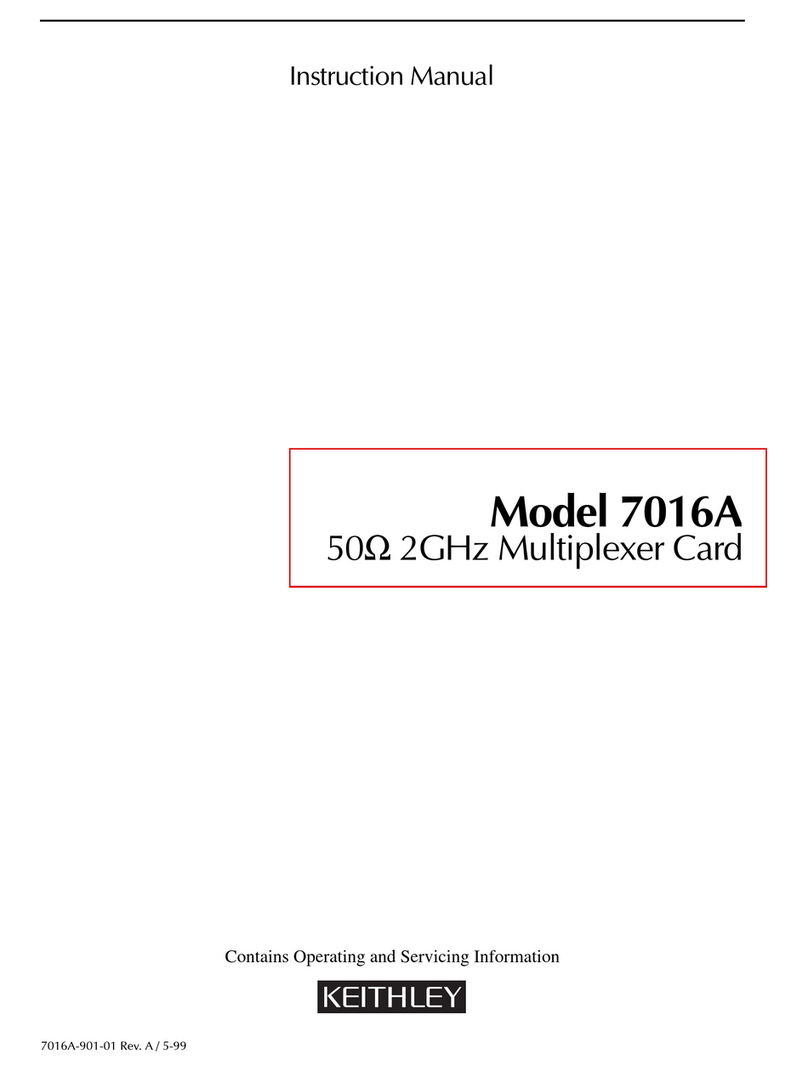
Keithley
Keithley 7016A User manual

Keithley
Keithley 7706 User manual

Keithley
Keithley 7702 User manual

Keithley
Keithley 7074 User manual
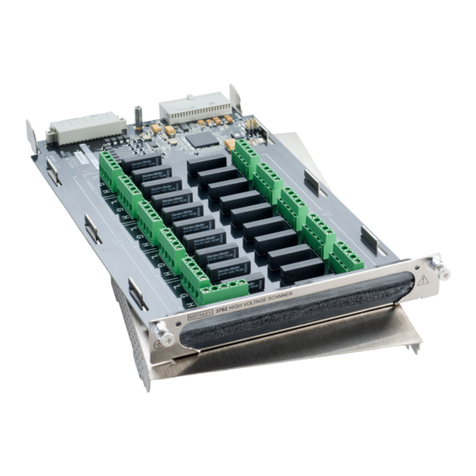
Keithley
Keithley 3706A User manual

Keithley
Keithley 7014 User manual

Keithley
Keithley EXP-16 User manual

Keithley
Keithley 7015-S User manual
